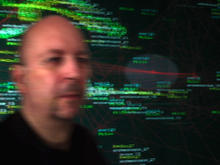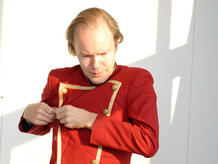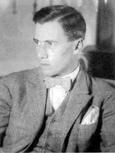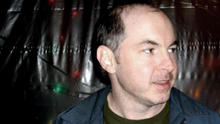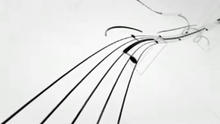Audio Kinematics
(2007)is an audio/video installation by Jost Muxfeldt and works with the phenomenology of sound and space, and how a listener is manifest in that space. Formally, it plays with the idea of kinematic relations on the level of sound.
Audio Kinematics utilizes the spatial relations and proportions of a mechanical structure to determine various parameters of a sound composition, and creates a kind of virtual kinetic sound sculpture.
The motions in the current realization are based on the principle of a mobile. This principle is base on a binary tree structure combined with circular motions. Since the motions of the individual nodes are always circular, they can over time be described with a series of sine waves added to each other . The motion of one node is thus described by the amplitude modulation of the sine wave of the parent node. Thus the motion is closely related to one of the most basic principles of audio synthesis.
The entire structure allows for a total sound experience in which the progression over time is determined on the one hand by the choice of the actual sound components, and on the other hand by the distance and motion of these components in relation to the listener. The listener is drawn into a relation to a sound environment whose shape and timbre changes over time by means of its specific spatial mechanics.The motion is simultaneously projected on a screen so that the listener can follow the mechanics of the sound visually as well.
Source: Jost Muxfeldt
Whether the sound is visualized or the speeding diagrams are set to sound is unimportant. It is a total art work which addresses both senses. One does not have to understand the explanations about sine waves, amplitude modulations, kinematics, or binary tree structures in order to enjoy this work. (Sebastian Preuss)
Source: Networked_Music_Review


